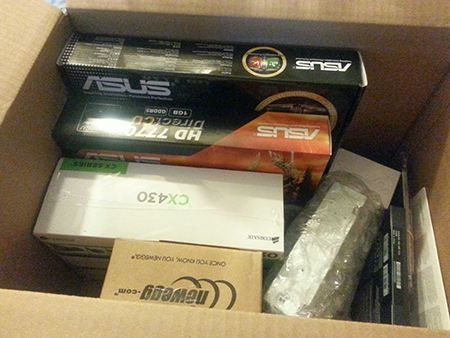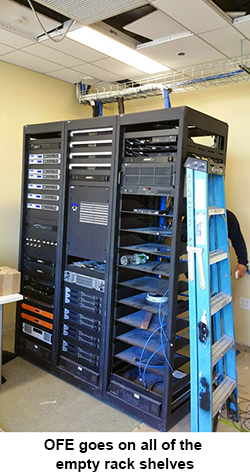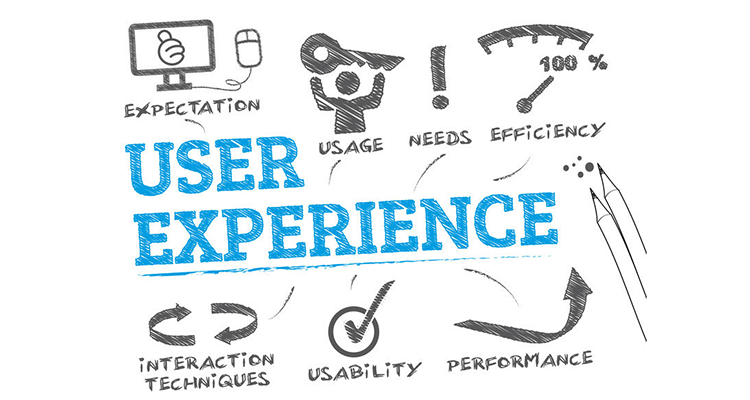Owner-Furnished Equipment Isn’t An After-Thought — Don’t Treat It as Such
 Earlier this year I had a client ask the specifications of the “PC – OFE” (Personal Computer – Owner Furnished Equipment) in one of their conference rooms. This was a series of near-identical videoconferencing rooms designed quite a few years ago and now approaching the completion of installation. What followed was a discussion both frustrating and confusing for all involved; I explained that requirements were dependent on the needs of individual user groups (about only a few of which I’d ever been told enough to offer comments) and that, from the perspective of the AV system, the PC was merely a source. So long as it had an HDMI, DVI-D or DisplayPort output it would be viewable through the AV system, and if said output had a resolution of 1920×1080 it would be viewable with no scaling or other manipulation.
Earlier this year I had a client ask the specifications of the “PC – OFE” (Personal Computer – Owner Furnished Equipment) in one of their conference rooms. This was a series of near-identical videoconferencing rooms designed quite a few years ago and now approaching the completion of installation. What followed was a discussion both frustrating and confusing for all involved; I explained that requirements were dependent on the needs of individual user groups (about only a few of which I’d ever been told enough to offer comments) and that, from the perspective of the AV system, the PC was merely a source. So long as it had an HDMI, DVI-D or DisplayPort output it would be viewable through the AV system, and if said output had a resolution of 1920×1080 it would be viewable with no scaling or other manipulation.
This has, for quite some time, been the answer. It was the answer when PCs would have VGA outputs and be use for PowerPoint, it was the answer yesterday when PCs have HDMI outputs and may be use to stream videos. Is it the answer today or tomorrow? Have we reached the point at which we need to start looking at “OFE” in a different way? The answer is an unqualified “yes.”
On Specifications
What is a PC today in the world of AV? For years various manufacturers have tried — with varying levels of success — to deliver a “conference room in a box”: a single device to handle conferencing, video routing, audio mixing and control. In a smallish conference room today the very best single tool for a space’s complete AV needs is, without question, a PC. A dedicated room computer is more flexible than standard AV hardware, is already something IT teams expect to have on their network and are both able and willing to support, and can be upgraded as software updates become available. Displays, amplifiers and microphones have now been reduced to a series of peripherals. As AV professionals this means that we can no longer shrug and write “OFE.”
 The PC has become the heart of the AV system; in fact, in a trend which will only grow, I’ve argued that PCs can replace many aspects of traditional AV systems. In several current projects I am looking at software solutions for collaboration, for recording and streaming of content, and for aspects of control. I expect to add DSP to that in the near future as echo cancellation, mixing and audio routing move out of dedicated boxes and onto servers. What does that mean for us?
The PC has become the heart of the AV system; in fact, in a trend which will only grow, I’ve argued that PCs can replace many aspects of traditional AV systems. In several current projects I am looking at software solutions for collaboration, for recording and streaming of content, and for aspects of control. I expect to add DSP to that in the near future as echo cancellation, mixing and audio routing move out of dedicated boxes and onto servers. What does that mean for us?
First, as room PCs go from being a source to becoming AV processing devices, we need to take as much care in specifying them as we do with, say, a video switcher. Is there sufficient processing speed to decode or encode streaming video? Is a dual NIC needed to access an AV control VLAN? Are USB 3 ports required for a camera input?
On Coordination
Traditional AV systems have always been tested in-house, often without the benefits of network connectivity and with, at best, a video test generator filling the role of the PC. Then came network-based systems and with them the need to mock-up at least some level of connectivity, even if it is as simple as a standalone network switch. I’ve even seen these “test switches” built into AV racks and retired in place during install. The presence of a switch gives the AV contractor a hedge against incomplete IT systems installation holding up on-site installation.
What happens now with a PC-centric system? The good news is that such systems require significantly fewer devices, and, therefore, less AV cabling than a more hardware based system. This diminishes the need to verify physical connectivity, but adds new requirements for testing the interaction between various hardware and software components. Are there multiple acoustic echo cancellation algorithms fighting each other, or no echo cancellation at all? Do the user’s choices of soft codec, recording application and scheduling platform work together with each other and with dedicated AV hardware? If the AV control system is intended to execute a batch file on the PC does it always work, or do some conditions cause failures? Are there security features and settings which would prevent the AV system from interacting with the PC in the manner intended and, if so, can these be changed without violating the users’ security policies?
This means that the in-house toolkit needs to look much different than it once did. About five years ago, one could at the very least test even the most complex systems with not much more than video sources, audio sources and perhaps a phone line. Today such a kit could include computers running various operating systems (or a series of virtual machines on a server), software licenses, and a managed network switch.
The best — and hardest — solution is to change our relationship with owner-furnished equipment. No longer is OFE limited to CATV receivers and a PC used as a mere source; today it can often be a very central part of an AV system on which AV professionals will have to work alongside traditional IT staff to properly configure, install and test.
Take Nothing For Granted
One theme to which I keep returning is that, as commodification and consumerization continue to take stronger hold, our scope has to broaden beyond those beloved proprietary AV boxes. We need to look at more, to understand more, and to interact with more. And, most importantly, we need to educate our clients more deeply.
In the above example, it was OK for me to not know for what a computer would be used — this time. For newer projects? It’s increasingly difficult for me to do my job well without having that answer. It’s time for us to start paying more attention to “OFE” and stop thinking that “by others” means we needn’t care.





